ARTH 17th-century France The arts during the absolute monarchy of Louis XIV
1/12
There's no tags or description
Looks like no tags are added yet.
Name | Mastery | Learn | Test | Matching | Spaced |
|---|
No study sessions yet.
13 Terms
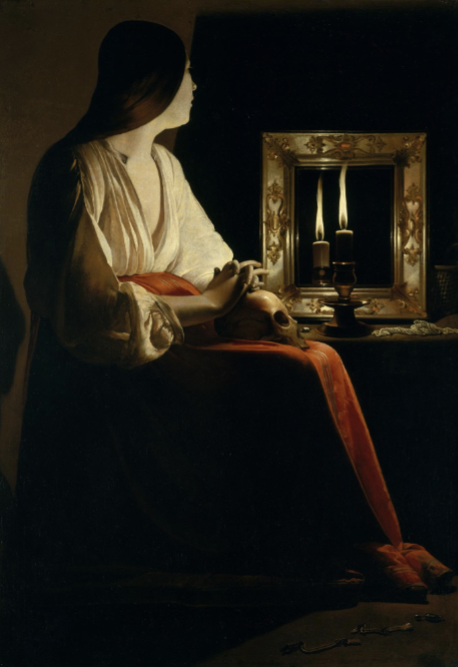
Georges de La Tour, The Penitent Magdalen, c. 1640, The Met
example of French painting influenced by Caravaggio and the Italian baroque. Example of the influence of Caravaggio & the trend for candlelit scenes in the 17th century. pink dress = attribute of Mary Magdalen. mirror =vanity. skull (momento mori) = death, the finite. nature of human life. candle = spiritual enlightenment.
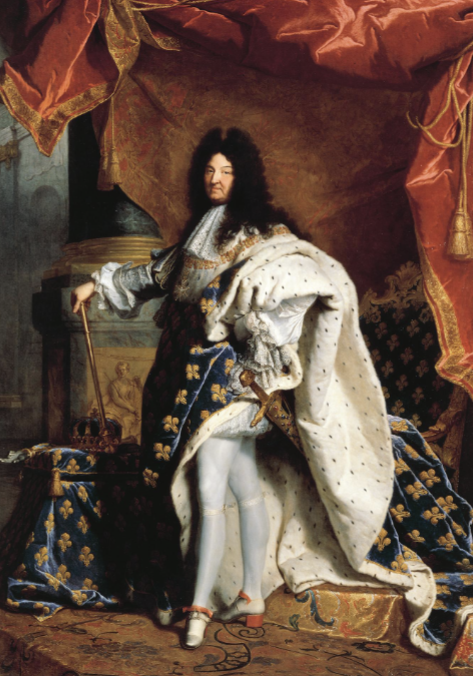
Hyacinthe Rigaud, Louis XIV, 1701
example of French painting under the royal academy. The king’s official state portrait. Louis was an absolute monarch. He ruled without the help of a prime minister, thus consolidating all the power of the State to himself. This portrait, unlike Charles I’s on which it’s based (next slide), is meant to convey elegance (the dance pose—Louis was vain about his legs) AND power above all else
Louis XIV and the gardens of the palace of Versailles, the formal French garden & exercising control over nature
garden as monument to the power of the absolute monarch Louis XIV (the Sun King) ❖ taming (beautifying) nature, “improving” it ❖ human intellect /ingenuity applied to the task of applying design to nature ➢ Philosopher René Descartes: “I think therefore I am.”
Royal Academy of Painting and Sculpture Paris, France. Founded 1648
Funded by the Crown (King Louis XIV). Thus, artworks’ subject matter generally had to benefit the monarchy. Emerged as the most important art academy in Europe (surpassing the original academy in Rome that was founded during the Renaissance). Tightly organized (strong bureaucratic control). Academy taught technique and theory. Focused on mastering the representation of the human figure and on history painting. 17th-century French academic artists revered the classicism of Italian Renaissance art (excluding the colorist art & loose brushwork of Venice). Work produced by the academicians is often referred to as “academic classicism” to distinguish it from both classical art (antiquity) and Renaissance art
North
conflict at the Academy between Northern European/Venetian vs. Italian (Roman) painting traditions. descriptive detail, colorism, loose brushwork, In 17thC France, Flemish painter Rubens represented this tradition (via 16thC colorist Venetian Renaissance painting that was an influence on him)
Italy
conflict at the Academy between Northern European/Venetian vs. Italian (Roman) painting traditions. “classicism”, smooth surface (no visible brushwork), legible composition & narrative, figures have strong contours, restrained palette, 17thC French painter Nicolas Poussin represented this tradition
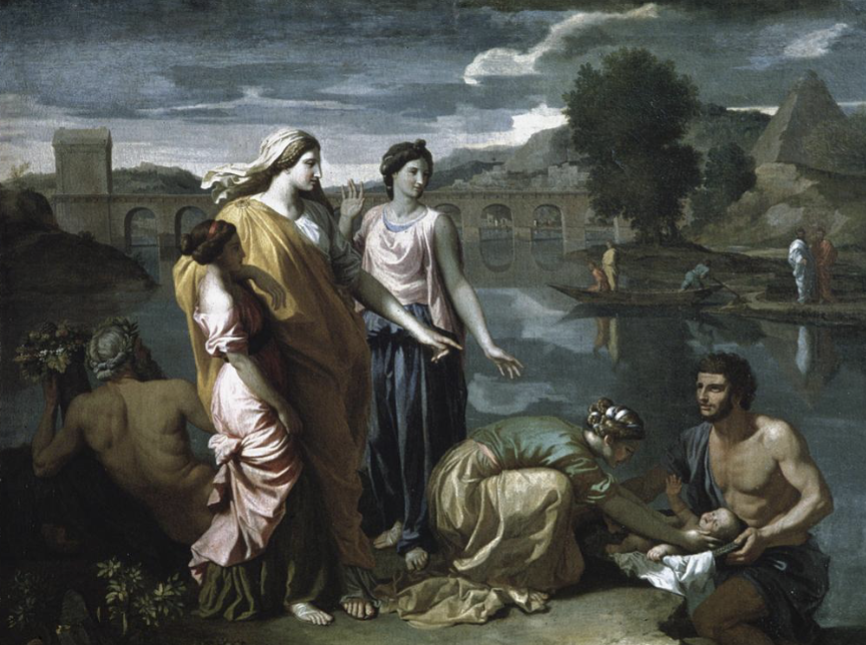
Nicolas Poussin (France), The Finding of Moses, 1638
example of 17th C. Poussin that influenced French Art. Poussin represents the classical tradition revered by the French Academy
Charles de la Fosse, The Finding of Moses, c. 1700
example of French art. At the turn of the 17th to 18th centuries, French artists eventually favor the softer Northern & Venetian colorist approach to painting. Rigid classicism starts to fall out of favor towards the end of the 17thC. warmer use of color. everyone blends together since it is almost monochromatic.
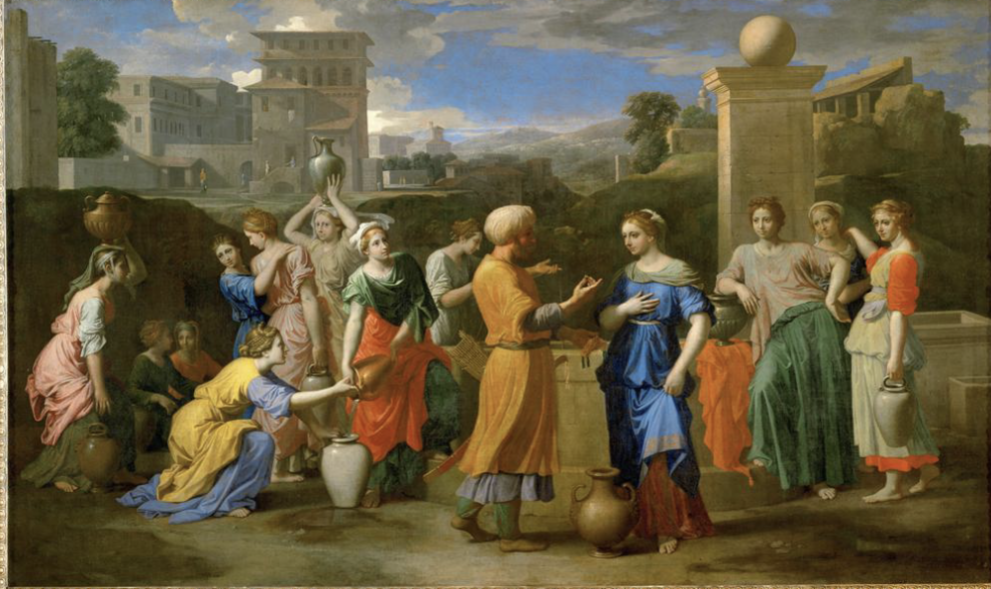
Nicolas Poussin, Rebecca at the Well, c. 1648
example of History painting in 17th-century France: Poussin’s classicism vs. Rubens’ modern colorism. story from the old testament. Eliezer gets sent out by his boss Isaac (patriarch of Judaism) to find a bride for his son. in the story Rebecca gives water to the camels and Eliezer illustrating her kindness. Poussin left out the camels because they would distract form the conversation of Eliezer and Rebecca illustrating Poussins deliberate choices.
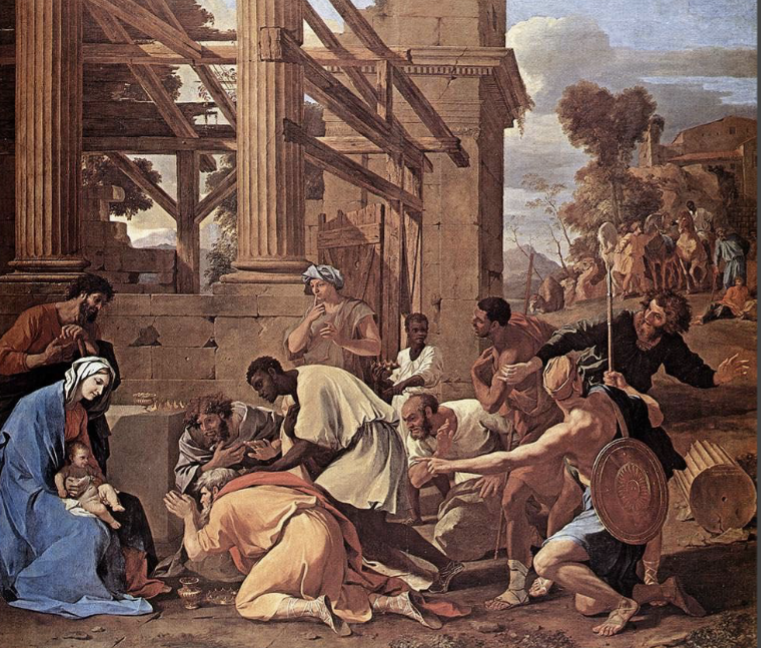
Nicolas Poussin, Adoration of the Magi, 1633
example of The Adoration of the Magi (New Testament): The Poussin faction vs. the Rubens faction butting heads at the 17thC French Academy. For the French Academy: Poussin’s paintings = the ideal expression of academic classicism. Aiming for legibility so the narrative comes through. Little to no trace of the artist’s hand so as not to interpose himself between the viewer and the moral message of the story. Poussin’s linear composition, which read from left to right, with all the main figures in the foreground, helped to assure legibility.
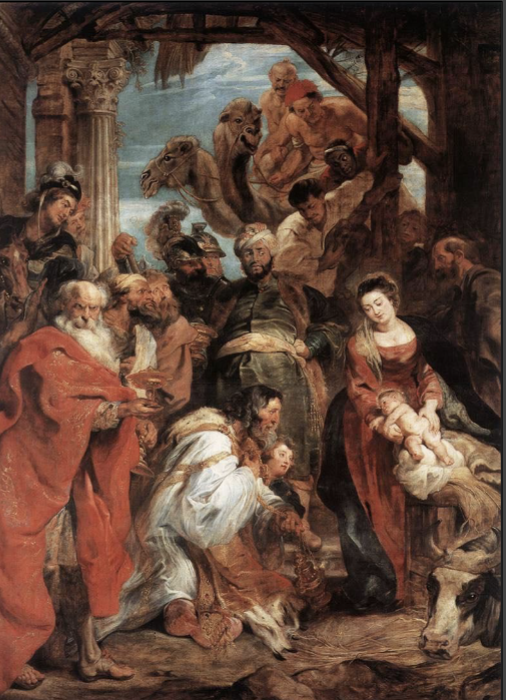
Peter Paul Rubens (Flemish), Adoration of the Magi, 1624
example of The Adoration of the Magi (New Testament): The Poussin faction vs. the Rubens faction butting heads at the 17thC French Academy. Though Flemish, Rubens was the central inspiration for the partisans of “modern,” colorist painting at the French Royal Academy. Rubens’ baroque sensibility, ie, the jumble of figures in a complicated composition It takes a few seconds before we spot the Virgin and the infant Jesus. The French Academy would have disapproved because the key figure (Jesus) and the narrative get lost in the visuals
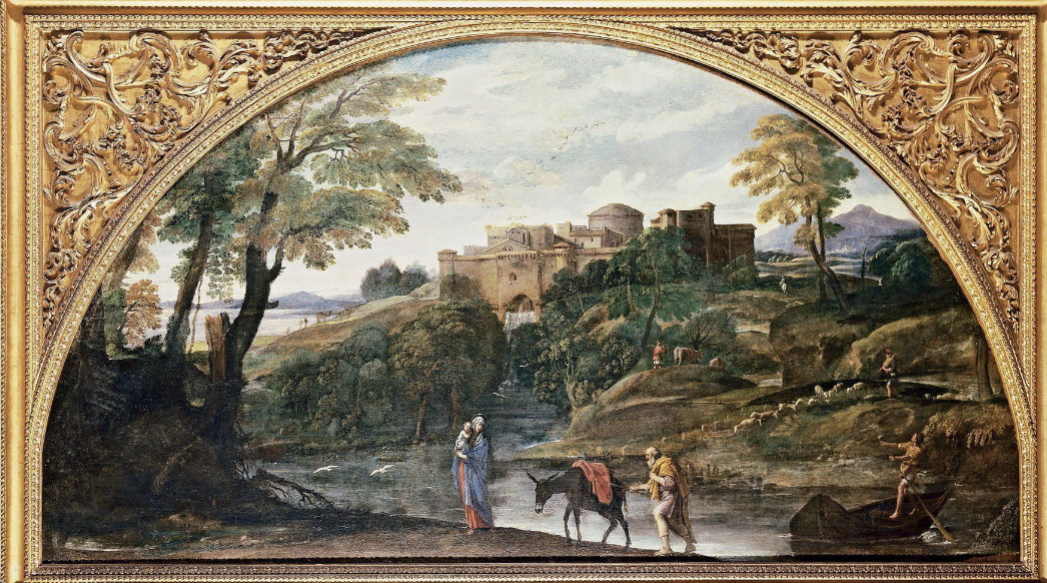
Annibale Carracci (Italian), Landscape with the Flight into Egypt, 1603
example of 17th-century French landscape painting based on “classical landscapes” in the Italian tradition. Mary and Jesus escape form Egypt so baby Jesus doesn’t get murdered. used figures from history to elevate landscape painting since it is second to last on hierarchy of genres.
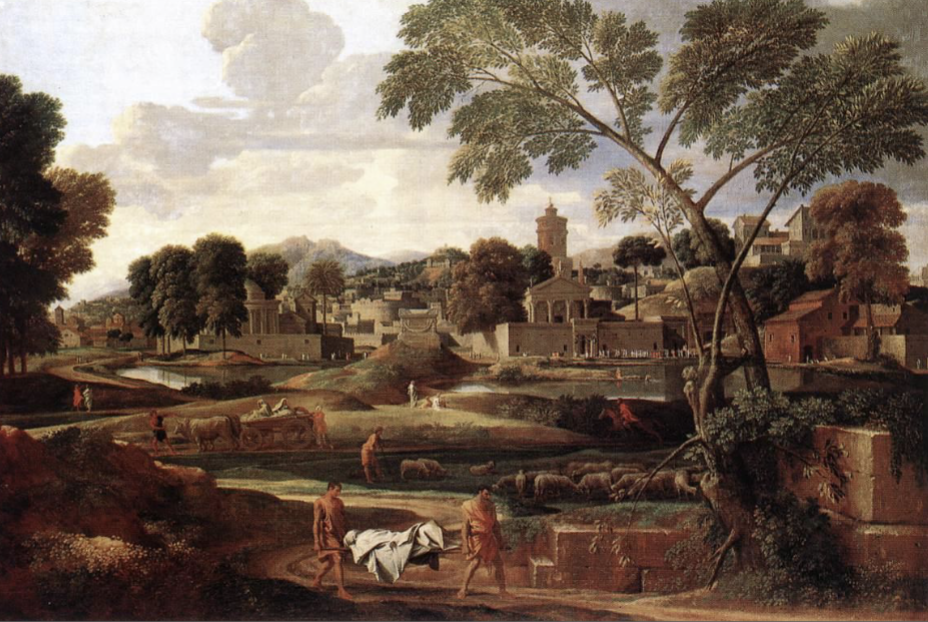
Nicolas Poussin (France), The Burial of Phocion, 1648. National Museum, Cardiff, Wales
example of 17th-century French landscape painting based on “classical landscapes” in the Italian tradition. main figures are going in the foreground. uses witch backs so eyes get led into the background. uses atmospheric perspectives to give the feel that the mountains are very far into the background.